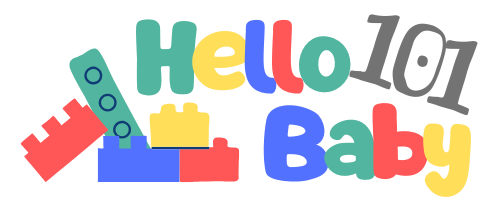Tantrums are one of the most challenging parts of parenting toddlers. If your little one screams, cries, kicks, or even lies down in frustration, you are not alone. Almost every parent experiences toddler tantrums, and they can feel overwhelming. The good news is that tantrums are a completely normal part of child development and not a reflection of your parenting skills.
This guide combines personal parenting experience with expert backed advice from trusted sources such as the NHS and child development specialists. Here, you will learn why tantrums happen, when to worry, and the best strategies to manage them calmly. We will also share practical tips, a chart for quick reference, and some much needed reassurance to ease your mind.
By the end, you will understand why toddlers throw tantrums, how to handle them effectively, and how to support both your child and yourself during these emotional storms. Remember: tantrums are a phase, and with the right strategies, you can get through them with patience and confidence.
What Are Toddler Tantrums?
Toddler tantrums are intense outbursts of frustration, anger, or upset that typically occur between ages one and four. They may include crying, screaming, kicking, hitting, or refusing to move. According to the NHS, tantrums are most common between ages two and three, when children are learning to express their emotions but don’t yet have the words to communicate effectively.
In simple terms, tantrums are your child’s way of saying, “I’m overwhelmed and don’t know how else to show it.”
Expert Tip: Tantrums are a normal part of emotional development. They are not signs of a “bad child” but of a child learning to navigate big feelings.
For more guidance on helping your child manage these emotions, see our post: Helping Your Child Cope with Big Feelings Without Meltdowns
Why Do Toddlers Throw Tantrums?
Tantrums often happen because toddlers are caught between wanting independence and lacking the skills to manage emotions. Common causes include:
- Frustration: When they can’t do something by themselves.
- Communication struggles: They want to express themselves but don’t yet have the words.
- Tiredness or hunger: Overwhelmed bodies lead to emotional meltdowns.
- Desire for independence: Saying “no” is part of learning autonomy.
- Overstimulation: Too much noise, activity, or change can spark frustration.
For instance, a toddler who is naturally strong willed may have bigger tantrums when denied a toy, while a more sensitive child may melt down if routines change suddenly. Some children are prone to tantrums in new environments, like nurseries or playdates, while others save them for when they’re most comfortable usually at home with parents. Understanding your child’s personality helps you respond with empathy instead of frustration.
This often happens in situations parents know well: when you say “no” to a treat at the supermarket, when it’s bedtime, or when your toddler can’t get their shoe on properly.
Parent Tip: Try to identify the trigger. Often, tantrums are less about the toy and more about hunger, tiredness, or a need for attention.
Signs of Tantrums and When to Worry
Most tantrums are normal and short lived. But here’s when to pay attention:
- Tantrums last longer than 15–20 minutes.
- Your child frequently hurts themselves or others during tantrums.
- Tantrums continue well beyond age five.
- Your child seems withdrawn or not engaging between tantrums.
Everyday tantrums usually start and stop quickly, with your toddler eventually calming and moving on. Red flags are when tantrums feel out of proportion, happen multiple times daily, or interfere with daily life such as refusing to leave the house, constant aggression, or harming themselves. If you’re unsure, keeping a diary of when and how tantrums happen can help your GP or health visitor see patterns.
How to Handle Toddler Tantrums
At Home Strategies
- Stay calm and avoid shouting.
- Distract with a toy, song, or new activity.
- Give choices: “Do you want the blue cup or the red cup?”
- Stick to routines, which help children feel secure.
- Use positive reinforcement when they calm down.
Another helpful approach is to “name it to tame it.” For example, saying “I see you’re angry because the toy won’t work” helps toddlers connect words to feelings. Some children respond well to having a “calm corner” with cushions or soft toys where they can go to cool off safely. Consistency is also crucial if one parent allows sweets after a tantrum and the other doesn’t, it can confuse the child and make meltdowns worse.
When to Seek Help
If tantrums are extreme or affecting family life, it’s okay to seek support. Your GP or health visitor can guide you to parenting programmes, local child services, or specialists.
Preventing Tantrums Before They Start
While not every tantrum can be avoided, some can be reduced with planning:
- Keep snacks handy: Low blood sugar often sparks meltdowns.
- Prepare for transitions: Give a warning before leaving the park or switching activities.
- Offer limited choices: Instead of asking “What do you want to wear?” say “Red jumper or blue jumper?”
- Maintain routines: Toddlers feel secure when they know what comes next.
- Model calm behaviour: Children copy adults showing patience teaches patience.
Parent Tip: Prevention isn’t about avoiding every tantrum, but about reducing unnecessary ones so your child has more chances to practise calm behaviour.
Understanding Timeout vs Time In
Timeouts may not always be effective for toddlers. Instead, some experts recommend a time in, where you stay close, provide comfort, and help your child name their emotions.
Quick Reference Chart
| Common Trigger | Example Situation | Helpful Response |
| Hunger or tiredness | Meltdown before dinner or nap | Offer a snack or rest |
| Frustration | Can’t put on shoes | Gently help or break task into steps |
| Attention seeking | Screams when on the phone | Give 5 minutes of focused attention |
| Denied request | Wants sweets at the shop | Calmly say no and distract |
| Overstimulation | Party or crowded space | Remove to a quiet spot |
Pro Tip: Consistency is key. Set boundaries gently but firmly so your toddler learns what to expect.
Safety Do’s and Don’ts
- Do stay calm and patient.
- Do set simple, clear rules.
- Do comfort your child once calm.
- Don’t give in to every demand.
- Don’t punish harshly or shame your child.
- Don’t ignore consistent or extreme behaviour seek advice instead.
Reassurance for Parents
If you are feeling guilty about your toddler’s tantrums, please don’t. Tantrums are part of learning self control and are not a reflection of your parenting. Every child goes through this phase, and with time, patience, and consistency, it will improve.
Parent Tip: Take a deep breath and remember that your calm response is teaching your toddler how to manage emotions.
Frequently Asked Questions
Does my toddler’s tantrum mean they are naughty?
No. Tantrums are a normal developmental stage and not a sign of “naughtiness.”
Why do toddlers throw tantrums?
Usually because they feel frustrated, tired, hungry, or unable to express their emotions.
How can I stop tantrums before they start?
Identify triggers such as hunger, tiredness, or overstimulation, and try to manage them in advance.
Can tantrums harm my child’s development?
No, occasional tantrums are not harmful. They are part of learning emotional regulation.
Conclusion
Most toddler tantrums are harmless and short lived. With patience, calmness, and consistency, you can help your child learn to manage big feelings. Remember, this stage will pass, and your child will gradually gain the skills to express themselves more clearly.
As a parent, I know how worrying and exhausting tantrums can be but please remember, you are not alone in this journey.



